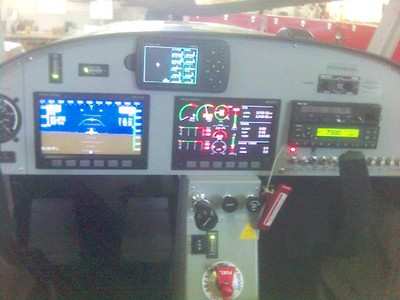Aero-Tips!
A good pilot is always learning -- how many times have you heard
this old standard throughout your flying career? There is no truer
statement in all of flying (well, with the possible exception of
"there are no old, bold pilots.") It's part of what makes aviation
so exciting for all of us... just when you think you've seen it
all, along comes a scenario you've never imagined.

Aero-News has called upon the expertise of Thomas P. Turner,
master CFI and all-around-good-guy, to bring our readers -- and us
-- daily tips to improve our skills as aviators, and as
representatives of the flying community. Some of them, you may have
heard before... but for each of us, there will also be something we
might never have considered before, or something that didn't
"stick" the way it should have the first time we memorized it for
the practical test.
It is our unabashed goal that "Aero-Tips" will help our readers
become better, safer pilots -- as well as introducing our
ground-bound readers to the concepts and principles that keep those
strange aluminum-and-composite contraptions in the air... and allow
them to soar magnificently through it.
Look for our daily Aero-Tips segments, coming each day to you
through the Aero-News Network. Suggestions for future Aero-Tips are
always welcome, as are additions or discussion of each day's tips.
Remember... when it comes to being better pilots, we're all in this
together.
Aero-Tips 04.03.06
Personal aviation is on the cusp of a major revolution. If you
have any doubts listen to Pete Combs’ accounts of his initial experience with glass
cockpits. Even some Light Sport Aircraft (LSA) "sport"
glass-cockpit avionics.

Facing this revolutionary change and looking to a new generation
of airplanes and pilots, the Federal Aviation Administration and
industry have developed what’s called (appropriately enough)
the FAA/Industry Training Standards, or FITS. I was fortunate
recently to attend a FITS instructor’s seminar run by the FAA
and hosted in Wichita by Cessna Aircraft. Representatives of
various FAA departments, avionics manufacturers, Cessna’s
training department and even what my Beech-centric friends call
"that other Brand C" (Cirrus) made for an informative weekend.
Scenario-Based Training
Key to the FITS concept is a move away from skills-based
education (fly a stall, practice a stall, evaluate a stall) to
scenario-based training (simulate a traffic pattern at a higher
altitude and put the pilot into a scenario where he/she might stall
the airplane, then figure out how it might be avoided). In
Federalese, "scenario-based training (SBT)…uses a highly
structured script of real-world experience to address
flight-evaluation in an operational environment." The idea is
"training the way you fly and flying the way you train." SBT,
according to FITS, "give the pilot an opportunity to
practice…sound aeronautical decision-making" and "thus
provides an effect method for the development of judgment and
decision-making skills."
So what’s new?
Running the risk of taking on the new flight training
establishment, scenario-based training is nothing new. It’s
what good instructors have done with their students all
along—put them in predicaments that require them to make
decisions, and then deal with the consequences of their choices.
The difference now is that FITS strives to make every lesson an SBT
exercise. Will it work? Only if it provides the repetition needed
to make airmanship the underlying foundation for those
decision-making skills.
Aero-tip of the day: I’ll have a lot more
to say about FITS (there’s a lot of good as well as some
challenges) in coming articles. For now, let’s say this:
airmanship and decision-making must receive equal attention to
develop a safe pilot.
 ANN's Daily Aero-Linx (04.30.25)
ANN's Daily Aero-Linx (04.30.25) ANN FAQ: Turn On Post Notifications
ANN FAQ: Turn On Post Notifications Classic Aero-TV: Agile Aeros Jeff Greason--Disruptive Aerospace Innovations
Classic Aero-TV: Agile Aeros Jeff Greason--Disruptive Aerospace Innovations Aero-News: Quote of the Day (04.30.25)
Aero-News: Quote of the Day (04.30.25) ANN's Daily Aero-Term (04.30.25): Expedite
ANN's Daily Aero-Term (04.30.25): Expedite




